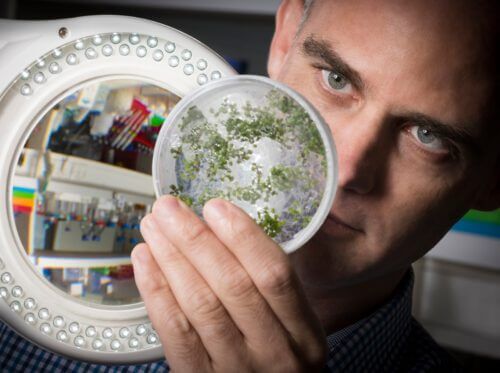Dr. Ofir Hakim from the Faculty of Life Sciences at Bar-Ilan University shifts the focus from the mutations to the control mechanisms that control the genes that cause the disease. The secret lies in the way the DNA helix is folded inside our cells. Researchers from the Hebrew University and Al-Quds University are also partners in the study.

Research carried out at Bar-Ilan University offers an innovative way of looking at diseases, including cancer, that are caused by genetic disruptions. It has been known for decades that cancer is caused by mutations, that is, disruptions in the genetic code, which cause the development and division of cells not according to the correct hereditary "plan", but it is less clear how that plan changes. The prevailing approach in cancer research is focused on characterizing genes that are common to people who have the same disease. These approaches have led to relatively limited insight, since one gene may be active in several types of cancer, but controlled in different ways. In the laboratory of Dr. Ofir Hakim in the Faculty of Life Sciences at Bar-Ilan University, instead of looking at the final product - the genetic program - they decided to investigate the mechanism that causes it to come into being.
Mutations in the p53 gene have been known for about 60 years to be responsible for various types of cancer. The research carried out in Dr. Hakim's laboratory indicates the ability of p53 to cause the various damages it causes in the genetic expression in cancer even in its normal version, without mutations.
No more junk DNA
To understand the essence of the research, it must be remembered that in humans only 2 percent of the DNA genetic material are genes that code for proteins that will be expressed in the organism's cells. The remaining 98 percent was considered "junk DNA" until a few years ago, but today it is known that these regions of DNA play an essential role since they contain sequences that control the expression of genes. The control sites are usually far away from the genes they are responsible for, which makes it difficult for researchers to know which site affects this or that gene. Another characteristic of DNA that is relevant to the current research is that it is a very long molecule - in every cell of our body, a 2 m long DNA helix is folded! The folding of the DNA allows it to fit inside the cell, but it is not a random folding. In each cell type, the DNA is uniquely folded, so that certain control regions come close to certain genes and control their expression. In this way, a skin cell looks and functions differently from a blood cell, even when it comes to cells with exactly the same genetic load in the same person.
The research by Dr. Hakim and his partners, published in the scientific journal Communications Biology from Nature, includes the integration of unique methods for identifying active control sequences and measuring DNA folding in the nuclear space. "We discovered that p53 changes its binding to control sequences that are in spatial proximity to genes whose expression changes during cancerous transformation," explains Dr. Hakim. "Usually, markers for the characterization and treatment of cancer are identified by looking for mutations or changes in the expression of important genes. Although p53 is perhaps the most studied factor in cancer, because it is mutated in more than 50 percent of cancer cases, we innovated that instead of measuring the final product, that is, a change in expression, we tested the control process through a combination of several advanced molecular and computational tools that we developed at Bar -tree. One of the innovations in our research is that p53 disrupts the genetic program without mutating or changing anything at its level in the cell, so this mode of action escaped previous studies.
The approach we presented, the result of the joint work of Dr. Michal Schwartz and Avital Serosi-Portugaz, can be applied relatively easily in any type of cell and opens a way to identify mechanisms in the development of diseases and ways to treat them."
The research partners are researchers from the Hebrew University, and Al-Quds University in the Palestinian Authority, with whom there is ongoing and successful research collaboration.
Another part that occupies the researchers in Dr. Hakim's laboratory is plants. The researchers use techniques that map DNA folding and characterize the control sites on it to understand which hereditary traits give plants resistance to stress conditions. This research is of great importance because in view of climate change and the reduction of agricultural areas of the type we are familiar with, there is an urgent need to cultivate resistant varieties of plants to feed the world's rapidly growing population.
